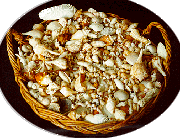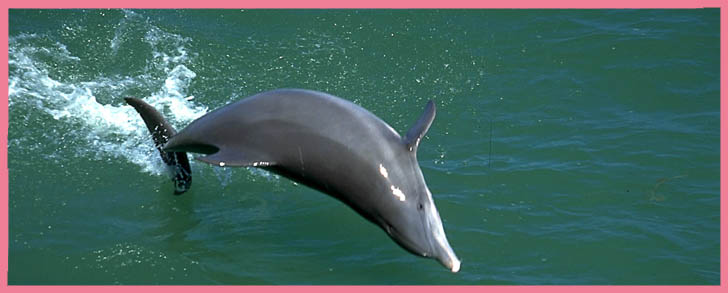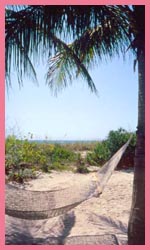|
Marco Island Florida Shelling
by Emily Savage
Marco Island has beautiful white sand beaches which beckon to all who take pleasure in the wonders of nature. We are so blessed to have the opportunity to see nature at work -- tides which come and go -- leaving behind treasures for the sheller who will pick up the shells left by the receding waters. We can watch the numerous sea birds who depend on shells for their survival because the shell animal is their food. There are manatees in the waterways and dolphin offshore doing their special graceful ballet - sometimes alone - more often with others of their species.
In the busy process of living, working and playing on Marco Island, we should always be aware of Nature and the role she plays in providing us with the special graces we enjoy. Few people in our great Country have the privilege we have to enjoy the ocean, the birds, and the shells we find. It is our responsibility and our obligation to protect these gifts of Nature.
 Shelling can be a wonderful experience if you plan for it and are prepared. There are several things you should do before you start:
Shelling can be a wonderful experience if you plan for it and are prepared. There are several things you should do before you start:
1. Check the tides. While low tide is best because more shells will be exposed as the water recedes, you should allow time for gathering your treasures. If you plan to walk across an inlet to a sand bar, start earlier so you won't find yourself on the sand bar at high tide. Incoming tide currents can be strong and pose a problem for your safe return to shore.
2. Have comfortable shoes and suntan lotion with you. Remember that fair skin burns more readily, so protect the tops of your feet -- something we tend to overlook.
3. Mesh bags are good for shelling as the sand and water can run through. However, small shells can get lost and fragile shells may be crushed by the larger, heavier ones, so bring a smaller plastic bag for these shells.
4. Starfish tend to lose their legs on the way home. Unless you have a flat surface to put
them in, it is best to leave them. Should you successfully take one home, use alcohol to cure it and then let it dry in the sun.
5. Sand dollars should be bleached in half clorox and water for several hours. Some people prefer to dry them in the sun for a week before bleaching them. Either method works. Rinse them thoroughly after bleaching, and allow them to dry completely in the sun. If they are not white enough for your project, paint them with a white acrylic paint before hardening them with sand dollar hardener or Elmer's Glue which has been diluted with water. Sand dollars are fragile and should not be left in Clorox for extended periods, because they will crumble when handled if left too long in bleach.
6. Before taking live shells, consider the cleaning process and the fact that it is prohibited in some areas. If you do not have access to a cooking facility, it is best to leave live shells behind. They need to be cooked as soon as possible to kill the animal and then to remove it from the shell intact. If the animal is allowed to die and remain in the shell, you will throw it away, and this really needs to be considered by the sheller. Should a small part of the animal be left in the shell on removal, fill the shell with alcohol which will shrink the remaining tissue. Then fill the shell with water and shake vigorously to remove the piece remaining in the shell.
7. To clean the shells outside, put them in Clorox for a short time. Large shells such as the horse conch may take an overnight soak to completely clean. Barnacles should then be chipped off with an old kitchen knife and the shell may need to be soaked again. Glaze is used to protect the color and preserve the shell, but it is never used on a specimen shell. When using shells for craft items, make the item before spraying the shells with glaze.
There are several excellent shell books and a waterproof edition, which can be carried with you for easy identification as you find your shells.
 Shelling is a wonderful experience, and finding Nature's beautiful creations can certainly be rewarding. However, many shellers become overzealous and carry from the shore more shells than they should. If you have no specific purpose or place for the shells, consider leaving them for the sea birds, who as I mentioned earlier, depend on these shell animals for their survival.
Shelling is a wonderful experience, and finding Nature's beautiful creations can certainly be rewarding. However, many shellers become overzealous and carry from the shore more shells than they should. If you have no specific purpose or place for the shells, consider leaving them for the sea birds, who as I mentioned earlier, depend on these shell animals for their survival.
Marco Island welcomes you and invites you to enjoy our beautiful beaches. Help us to keep the art of shelling one which will be enjoyed for many years to come.
Emily Savage is married to Herbert Rosser Savage, Architect on Marco Island. They have three children and four grandchildren. Emily manages the shell shop across from the Raddison Hotel - SHELLS BY EMILY which is celebrating its 10th anniversary.
Emily and Herb are active in the Marco Lutheran Church where they both sing in the Choir. They both enjoy activities on Marco Island.

|


